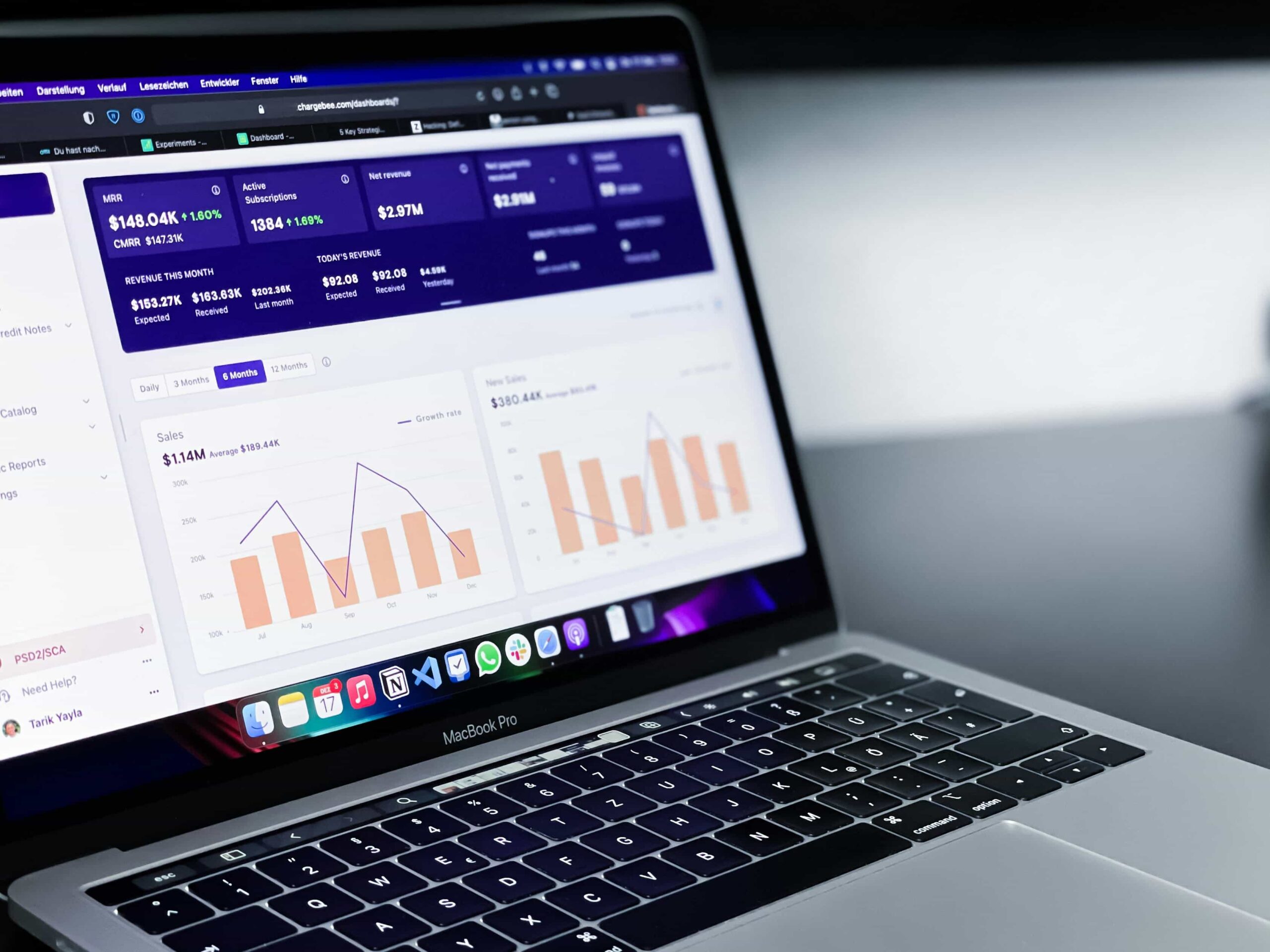Finding Your Bullseye: How to Choose the Right Marketing Channels for Your Business
Recent Posts
List of Detective Movies Solving Criminals with a Phone Tracker Digital Marketing Companies in Toronto Ad Agencies in London Ontario Global Talent Acquisition: Technology, Data, and Strategy for Success How Effective Marketing Strategies Help Small Businesses Gain Access to Lending Programs Leveraging Link Exchanges for Enhanced Ad Campaigns Enhancing User Engagement Through Intelligent Conversation Analysis How to Deal with Career Stagnation: Strategies for Moving Forward Blueprint for Success: The Art of Mockups Customizing Your Intranet Platform for Enhanced User Experience A Comprehensive SEO SWOT Analysis The Future of Newspaper Advertising in 2024Imagine you’re an archer, bow in hand, aiming your arrow at a distant target. The target represents your ideal customers – the people you want to reach with your marketing efforts. But simply shooting arrows indiscriminately in the general direction of the target is a surefire way to waste your ammunition (read: marketing budget).
The key to hitting the bullseye is carefully selecting the right marketing channels to deploy – channels that will reliably deliver your marketing messages to the right audiences at the right times. Fail to choose your channels strategically, and even the most compelling marketing will fall on deaf ears and blind eyes.
So how do you go about selecting the optimal marketing channels for your business? Let’s take a look at the main channel options available, as well as a proven process for evaluating and implementing the right channel mix.

The Main Marketing Channels
We focus on direct response and customer acquisition in e-commerce, lead gen, and mobile. When it comes to results and leads, we speak your language.
Before we dive into assessing channel fit, it’s important to understand the primary channel categories at your disposal. They can be divided into owned, paid, and earned channels.
Owned Channels
You have maximum control over messaging and engagement through owned channels. Examples include your brand’s website, blog, email newsletter, mobile app, online community, and more. Owned channels enable you to leverage content marketing, subscriber communications, e-commerce, and other tactics without third-party fees or restrictions.
Paid Channels
These are any marketing avenues that involve paying to boost visibility and reach third-party audiences. This includes paid search (e.g., Google Ads) and paid social media advertising across platforms like Facebook, Instagram, X, etc. It also covers other paid promotions like influencer marketing, affiliate marketing, sponsored content, and native advertising placements on third-party sites and apps. With paid channels, you’re essentially “renting” access to audiences through ad buys.
Earned Channels
These are channels you don’t own or pay for media placement on directly. They’re driven by word-of-mouth, buzz, shares, reviews, PR mentions, and other forms of earned media exposure. For example, getting featured in a news article, receiving positive reviews on sites like Yelp, or having customers organically promote your products on social media. The key is to create sharable, buzzworthy content and deliver exceptional customer experiences worth promoting.
Within each of those overarching categories, there are numerous potential sub-channels to leverage. Each comes with its own unique strengths, audiences, formats, and even sub-channels within the sub-channels. The key is identifying the specific mix that aligns with your goals, offerings, and customers.
Choosing Your Channel Mix
When it comes to choosing your marketing channel mix, there’s no one-size-fits-all formula. The optimal channels will depend on factors like your industry, target audiences, business model, resources, and more. However, here are some universal considerations to evaluate.

Your Customers’ Habits and Preferences
Where do your current and prospective customers spend time online and offline? Which channels do they gravitate towards for information, recommendations, and making purchases? Understanding their media consumption patterns is critical.
For B2B businesses selling to specific verticals or roles, your ideal channels may look quite different from a D2C e-commerce brand pursuing mass consumer audiences. Sales teams may need to leverage account-based marketing strategies via channels like LinkedIn to connect with priority prospects. D2C brands often thrive on places like Facebook, Instagram, TikTok, and YouTube to engage wider audiences.
You need a keen understanding of how and where your particular audiences discover, evaluate, and buy within your market. Leverage tools like audience surveys, QueryClick on-site visitor recordings, social listening data, third-party research reports, and consumer interview feedback to build that understanding.
Your Business Goals
Are you primarily looking to drive brand awareness, generate leads, enable sales, cultivate loyalty, or achieve some other core objective? Different channels have varying utility in facilitating different marketing goals.
Building broad awareness may call for channels like streaming TV advertising, billboards, and radio spots. Capturing demand and enabling sales could necessitate a heavy focus on SEM/SEO, affiliate marketing, and tailored nurture campaigns. On the other hand, customer retention and loyalty goals may justify significant investment in CRM, email, app, and community channels.
Get granular by mapping out the specific metrics and outcomes you need to achieve to reach core business objectives. Then prioritize channels that are optimized for facilitating those objectives.
Your Core Product/Service Offerings
The nature of what you sell can also influence your channel mix. For visually-oriented products like fashion, beauty, design services, or interior inspiration, highly visual channels like Instagram, Pinterest, and YouTube may be top priorities to showcase your work.
For complex, high-consideration purchases like business software, consulting services, or manufactured goods, channels that support in-depth content and sales enablement could be crucial. Think webinars, podcasting, long-form videos/articles, and even events.
Meanwhile, for hyper-transactional, low-consideration offerings like commodity consumer goods, an emphasis on lower-funnel performance marketing across paid search, affiliates, and sponsored content may prove most effective. Some niche businesses that have a small number of potential clients and no search demand might notice that SEO is not working, while a more direct approach through industry-specific events will be more effective.
Let your products and services help dictate areas of channel emphasis based on their core attributes and buying cycles.
Your Internal Capabilities and Resources
Realistically assess your team’s bandwidth, expertise, and budgets required to effectively leverage and optimize different channels over time. Earned and owned channels typically require more personnel time for content creation, community engagement, influencer outreach, and the like, while paid channels often demand bigger ad spending to achieve cut-through and conversions at scale.
Make sure the channels you select align with the strengths and limitations of your marketing organization. Don’t over-extend your resources across too many channels where you can’t produce quality execution. It’s better to double down on a focused few where you can maximize impact.
Using a systematic evaluation process, score each potential channel against criteria like the above to identify your top candidates for investment and focus.
Measuring Marketing Channel Performance

Simply launching marketing across your selected channels isn’t enough, though. You need a rigorous measurement framework in place to continually optimize performance over time.
At the highest level, you’ll want to track overall marketing ROI by channel to gauge overall effectiveness. Determine the total investment required (headcount, production costs, media spend, tools, etc.) and measure returns in terms of revenue, pipeline, conversions, or other core business metrics.
This should be accounted for in the overall budget of your project, especially if you work in a highly competitive field. For example, the critical role of marketing for casino websites requires website owners to monitor any detail in their main promotion avenues and consider that in their budget to remain competitive and efficient.
From there, implement channel-specific instrumentation to capture key performance indicators:
- Visibility metrics like impressions, views, and reach can indicate your ability to get marketing messages in front of the intended audiences.
- Engagement signals like clicks, shares, comments, and content consumption can show how effectively you’re capturing audience attention and interest.
- Conversion metrics tied to leads, sales, signups, and other core actions can demonstrate a channel’s direct business impact and ROI.
- Attribution modeling is key for closed-loop channel assessment by connecting marketing touchpoints across channels to eventual conversions and customer value.
- Leverage A/B testing, control groups, and experiment design to isolate the specific impact of different channel variables and optimize accordingly.
Depending on the channel, you’ll lean on different data sources – including website analytics tools, CRM data, call tracking, sponsored content metrics, sales mapping, and more. Strive to establish a unified, cross-channel measurement approach to avoid siloed channel reporting.
Optimizing Your Channel Strategy Over Time
No matter how carefully you choose your initial marketing channel mix, it should be considered a starting point rather than a static, final solution. Customer behaviors shift, your business evolves, and new channel opportunities emerge continually.
Maintaining an iterative test-and-learn mentality is crucial. Let the measurement data you’re gathering across channels guide your media mix and investment decisions over time. For channels delivering robust performance and ROI, double down your efforts and budgets. For underperforming channels, adjust your strategies or reallocate resources elsewhere.
Don’t be afraid to expand into new channels that show promise based on your evolving goals and audiences. Just a few years ago, TikTok was a blip on most marketers’ radars – yet today, it’s a juggernaut that combines entertainment, influence, community, and commerce in powerful ways. In today’s rapidly changing media landscape, channels that seemed irrelevant a short time ago could become critical for connecting with customers going forward.
You’ll also need to assess how different channels interplay and complement each other within your broader marketing ecosystem. How can you leverage channels in a cohesive, full-funnel way to progressively move audiences from awareness to consideration to conversion? Look for efficient ways to sequence, integrate, and amplify your messaging across relevant channels based on the typical customer journey.
Finally, make marketing channel iteration and optimization an enlightened and collaborative process at your organization. Involve cross-functional stakeholders from sales, customer service, operations, and more to pressure test your channel strategies. Socialize insights and lessons learned to build company-wide buy-in for your vision. And lean on external partners, consultants, or agencies who bring best-practice experience optimizing channel mixes for clients across different industries.
To Sum Up
Choosing the right marketing channels for your business is an ongoing process of hypothesizing, testing, measuring, and adjusting based on real-world performance data. Rigid adherence to any presumed “perfect” channel strategy will inevitably miss the mark as your business and marketing environment continue to shift. Embrace the need for agility, and approach your marketing channel strategy with a growth mindset.
